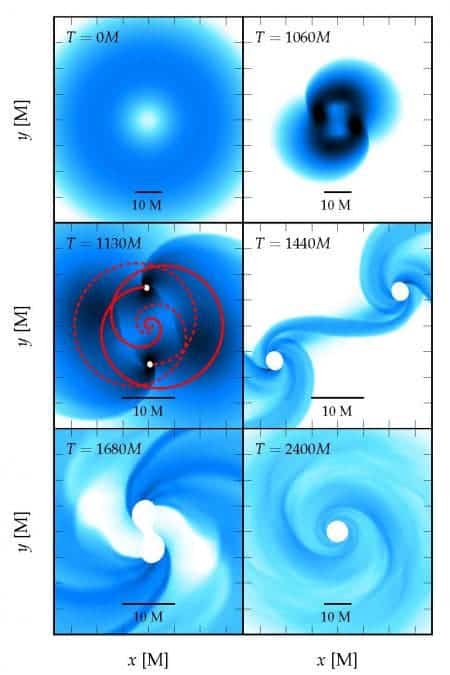Black holes, the most massive objects in the Universe that we know of, which exert a gravitational force so big that even light can’t escape, come in one shape, but a variety of sizes; on the smaller end, you have stellar black holes, which take shape when a sufficiently large star collapses into itself, and on the larger end, you get the supermassive black holes at the center of galaxies, which have masses billions of time more than the Sun. Over billions and billions of years, even small black holes can grow and become more massive, by slowly attracting and capturing more and more matter. This process explains why younger supermassive black holes exist, but it doesn’t explain how such enormous bodies came to be in the early universe. But new findings by researchers at the California Institute of Technology (Caltech) may help to test a model that solves this problem.

Some models of black hole formation and development rely on the presence of “seed” black holes that result from the deaths of very early stars. They then simply grow more and more as time passes.
“But in these previous models, there was simply not enough time for any black hole to reach a supermassive scale so soon after the birth of the universe,” says Christian Reisswig, NASA Einstein Postdoctoral Fellow in Astrophysics at Caltech and the lead author of the study. “The growth of black holes to supermassive scales in the young universe seems only possible if the ‘seed’ mass of the collapsing object was already sufficiently large,” he says.
To come up with a better idea, Reisswig, in collaboration with Christian Ott, assistant professor of theoretical astrophysics worked on a different model. During its life, the black hole slowly cools off and radiates its heat. It’s believed that sometime in the early Universe, supermassive stars existed, only for a brief period of time (relatively); when these stars collapsed, they maintain a spherical shape that possibly becomes flattened due to rapid rotation, but because they were so big, unlike normal stars, they are stabilized against gravity mostly by their own photon radiation. Basically, the outwards flux of photons generated by their enormous temperatures counterbalances the star’s own gravity.
But as these stars become more and more dense, an interesting effect kicks in: at sufficiently high temperatures, electrons are paired with their antiparticles, positrons. he creation of electron-positron pairs would cause a loss of pressure, further accelerating the collapse – ultimately causing a pair of orbiting fragments would ultimately become so dense that a black hole could form at each clump. The pair of black holes might then spiral around one another before merging to become one large black hole.
“This is a new finding,” Reisswig says. “Nobody has ever predicted that a single collapsing star could produce a pair of black holes that then merge.”
Reisswig and his colleagues used supercomputers to test their theories, and the results fitted in perfectly – as you can see in the video above. If indeed true, this finding could have major implications for cosmology.
“The emitted gravitational-wave signal and its potential detection will inform researchers about the formation process of the first supermassive black holes in the still very young universe, and may settle some—and raise new—important questions on the history of our universe,” he says.
The findings were published in Physical Review Letters. You can find out more extremely interesting information and resources on the homepage of Christian Reisswig.
Scientific Reference: “Formation and Coalescence of Cosmological Supermassive-Black-Hole Binaries in Supermassive-Star Collapse.” Caltech coauthors authors on the study include Ernazar Abdikamalov, Roland Haas, Philipp Mösta.






